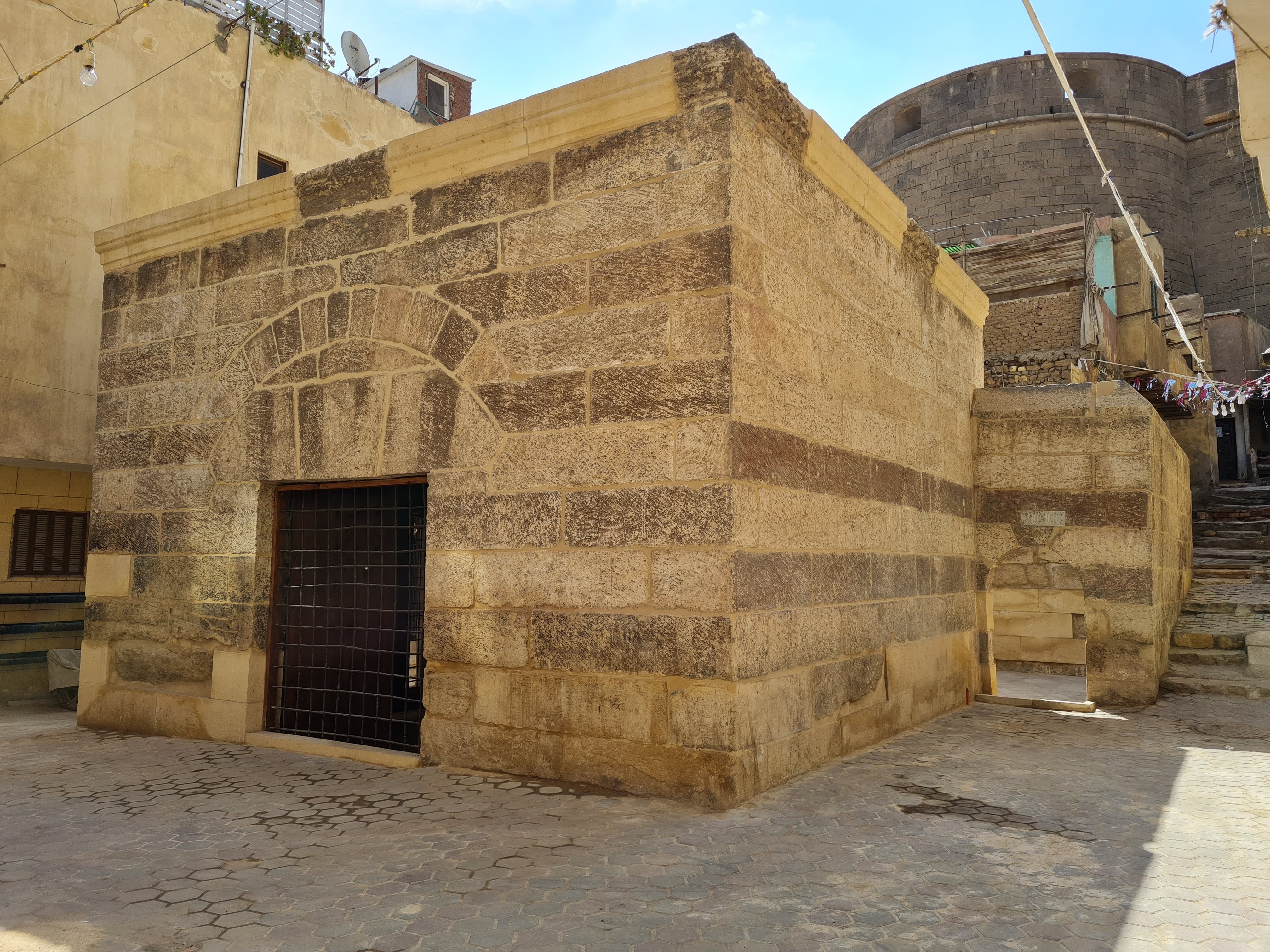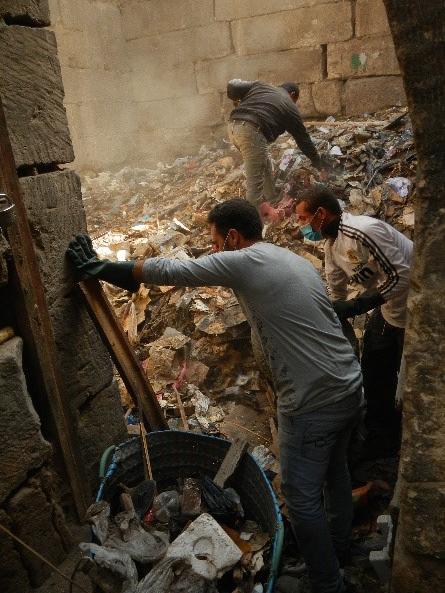- EraMamluk
- Project DirectorDr. May Al Ibrashy
- LocationHistoric Cairo
- AffiliationMegawra Build Foundation
- Project SponsorAntiquities Endowment Fund
- Project Dates2019-2021
Tucked away in a side street off the road that leads to the northern gate of Cairo’s Salah al-Din Citadel, is this intriguingly mysterious Mamluk building. Called a shrine, its only closed space is a sabil (structure for the charitable dispensation of water). It is a small building of a total area of around 150 square meters, yet it is built with massive stone blocks many of a length of more than 2 meters.
Al-Shurafa Shrine. Photo: Athar Lina
Located so close to the ramparts of the Citadel, and built of such massive blocks, could it be an extension to its defensive walls? Or is it one of the many extra-mural Citadel buildings mentioned in the sources and used for hospitality, as a court, to transfer water to the Citadel, or as a ceremonial bell tower?
Maybe it is a sabil standing above the underground cistern after which its street (al-Sahrij or Cistern Street) is named.
Is it possible that local residents are correct when they say it is the tomb of a group of shurafa (descendants of the prophet), or maybe virtuous women whose special karama (miraculous attribute) is to punish women who throw garbage inside its courtyard with divorce?
Whatever the function of this 14th or 15th century building, it was in dire need of conservation. Many of its stone blocks were damaged to an extent that threatened the structural integrity of the building. With time, the walls of the building had shifted slightly leading to many of the stone blocks forming its arches and vaults moving, and in one case falling out completely. It contained within it piles of garbage reaching a height of up to two meters. It was missing one of its sabil grill windows, much of its tiled floors. All surfaces were covered with grime and the lower registers of the walls were coated with salt encrustation.
Repair of metal drill window. Photo: Athar Lina
The many questions concerning the history of this small, yet fascinating structure and concerns over its poor condition, were reasons enough for initiating a project for its conservation. However, this was not the only reason why Athar Lina Initiative embarked on this project. Run by Megawra-Built Environment Collective, Athar Lina aims to establish modalities of citizen participation in heritage conservation based on a vision of heritage as a driver for development. Athar Lina works on architectural conservation, heritage education and heritage industries, and urban regeneration projects. Athar Lina’s interest in al-Shurafa Shrine stemmed from a concern for the neighbourhood of al-Hattaba as whole, where since 2018, it has worked on a project to advocate for its preservation and propose a plan for its regeneration. Al-Hattaba, despite being a historic neighbourhood located within the borders of the World Heritage Site of Historic Cairo, had been erroneously classified as an unsafe informal settlement and slated for replanning, which probably meant evacuation and demolition. It was particularly ironic that the main reason its buildings were in such a poor condition was that for close to 40 years, the government prohibited all repair and construction work because it wished to clear the area around the Citadel. In a misguided attempt to enhance the heritage site of the Citadel, many valuable historic buildings were lost and the few remaining ones were in poor condition, hence the classification as informal.
Athar Lina Initiative’s proposal for the preservation and regeneration al-Hattaba as a traditional residential neighbourhood pivoted on its heritage potentials. As an area rich in listed monuments such as al-Shurafa, and in handicrafts such as mother of pearl inlay and khiyamiyya (traditional Egyptian patchwork) and located at the entrance of the Citadel, its heritage could be the foundation for improved quality of life for its residents and better conditions for the preservation of its cultural heritage, whether tangible or intangible.
Al-Shurafa Shrine Conservation was one of two pilots implemented by Athar Lina Initiative in al-Hattaba. The plan was to conserve it and prepare a study for its rehabilitation as the flagship space within a center for design that focuses on revamping the traditional Hattaba crafts of inlay and khiyamiyya.
Conservation work focused on the following:
- Extensive conservation of the stone masonry walls and roofs included replacement of severely damaged blocks, consolidation, grouting, repointing, desalting and cleaning.
- Insultation of roofs and installation of a rain disposal system.
- Repair of flagstones and replacement of missing tiles.
- Conservation of special items such as the stone cenotaph and textile shroud covering it, stone basin, marble well rim, and iron grill windows.
- Limited excavation work to uncover the underground water cistern, its shaft and the system of channels and basins for the intake and dispensation of water located immediately under the floor tiles.
Stone masonry work. Photo: Athar Lina
Conservation of outer shroud. Photo: Athar Lina
Cleaning the courtyard. Photo: Athar Lina
In November 2019, and after removing more than 150 cubic meters of garbage from the shrine, a small ceremony was held to celebrate the start of the conservation project. Resident women taught visitors the techniques of patchwork and children participated in games inspired by the history of al-Hattaba. An old man walked in and held an impromptu session of dhikr (religious chanting). A year and a half and a global pandemic later, the newly conserved building will soon be inaugurated. The conservation project was one of many activities that convinced the Egyptian State to conserve al-Hattaba and consider implementing the regeneration project proposed by Athar Lina. If all goes well, al-Shurafa Shrine will soon become the heart of a center for craft and design inside a thriving neighbourhood no longer under threat.

